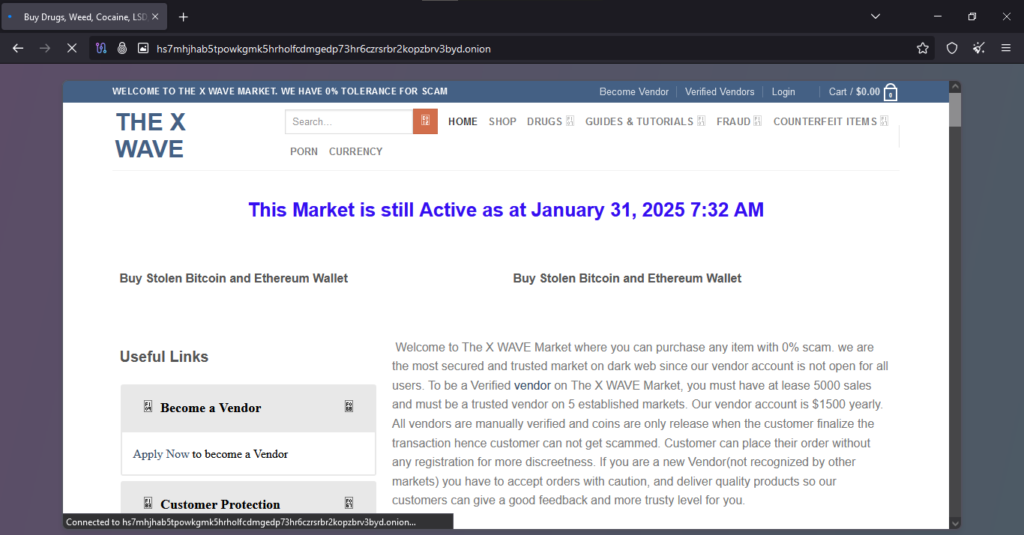Table of Contents
ToggleThe x wave market – TOR Scam Report (148)
Onion Link : http://hs7mhjhab5tpowkgmk5hrholfcdmgedp73hr6czrsrbr2kopzbrv3byd.onion/
Scam Report Date : 2024-12-03
Client Scam Report Breakdown
Original Scam Report :
According to the original scam report, the complainant alleges that they paid 100 USDT (Tether) to a seller but did not receive any response after the payment was completed. The lack of communication from the recipient suggests a scam, where the seller deliberately ceases contact once the payment has been received. This type of fraudulent transaction is common in peer-to-peer (P2P) crypto transactions, particularly in unregulated online marketplaces and the dark web. Without a proper dispute resolution system or escrow service, buyers are vulnerable to scams where sellers take the funds and disappear. The report does not specify the platform used for the transaction, but given the use of USDT, a stablecoin frequently used for anonymous and cross-border transactions, it is likely that the scam took place in a cryptocurrency-driven marketplace or an informal online trade.
Defining Key Terminology
To fully grasp the nature of this scam, it is important to define the key terms used in the report. USDT (Tether) is a stablecoin, meaning its value is pegged to a traditional currency, in this case, the U.S. dollar. It is widely used in digital transactions because it avoids the volatility of other cryptocurrencies like Bitcoin or Ethereum while still benefiting from the privacy and efficiency of blockchain technology. However, because Tether transactions are irreversible, once funds are sent, they cannot be retrieved unless the recipient voluntarily returns them. This makes USDT an attractive currency for scammers, as victims have little recourse after making a payment. Additionally, P2P (peer-to-peer) transactions refer to direct exchanges between individuals, without the involvement of a trusted third party. While some platforms provide escrow services, which temporarily hold funds until both parties fulfill their obligations, many scam operations either bypass escrow or operate on platforms with weak buyer protections. In this case, the scammer likely took advantage of the irreversible nature of crypto transactions and the absence of a dispute mechanism.
Broader Implications and Scam Analysis
This report highlights a common pattern in cryptocurrency scams: the lack of buyer protection in direct crypto transactions. Unlike traditional payment methods such as credit cards or PayPal, which offer chargeback mechanisms and fraud protection, blockchain-based payments are final once confirmed. Scammers exploit this by setting up fake listings, impersonating legitimate vendors, or simply disappearing after receiving payment. The absence of communication following the transaction suggests intentional fraud, where the seller never planned to deliver the promised goods or services. Additionally, because crypto transactions do not require identity verification, tracking down the scammer can be extremely difficult. This underscores the importance of using only verified sellers, trusted marketplaces with escrow protection, and secure payment methods when conducting cryptocurrency transactions. The complainant’s experience serves as a warning for others: always verify the legitimacy of a seller before sending funds, especially in crypto-based marketplaces where scams are prevalent.







